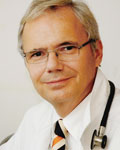 Docteur Christophe de Jaeger
Docteur Christophe de Jaeger
Unité de Physiologie de la sénescence - Institut Européen de la Longévité, Paris, France
2009 - HOW TO MEASURE BRAIN AGING
As adults age, central nervous system function slows appreciably. This phenomenon has been assessed with a wide variety of behavioral paradigms and originates from neurobiological factors related to aging. Given the growth of the elderly population and the concomitant increase in the proportion of cognitively impaired individuals, accurate measurement of the mental changes stemming from aging is an important scientific and social problem.
Moreover, because neuroelectric measures have provided some of the most direct evidence for the relationship between central nervous system function and age-related cognitive changes, they have played an increasingly important role in the quantitication and understanding of these effects. A particularly successful application of electrophysiological techniques has employed event-related brain potentials (ERPs). More specifically, the P300 component of the ERP has demonstrated considerable utility in the study of aging because it is thought to result from neural activity associated with attentional and memory processes. For example, P300 amplitude age-variation indexes changes in neural activity across the scalp, the timing of its peak provides a measure of mental processing speed that is independent of behavioral responding, and characterization of its normative values has yielded baseline measures against which cognitive illness can be evaluated.
Even though much progress has been made in the 30 years since the P300 potential was discovered, the primary question remains : What cognitive events does the P300 component reflect? The answer is still uncertain, with the interpretation of the P300 based on neurophysiological investigations of the brain mechanisms that underlie its generation, evidence from experimental studies that manipulate psychological variables, and results obtained from neuropsychological reports that examine the correlational relationships between P300 values and responses from behavioral tests.
The P300 component is often elicited with a simple discrimination task. This procedure has been dubbed the "oddball" paradigm because two stimuli are presented in a random series such that one of them occurs relatively infrequently, that is, the oddball. The auditory version of this task uses two different tones, interstimulus intervals of 1-3 s, and a target stimulus occurring less frequently than the nontarget or standard stimulus (e.g., probabilities of .20 and .80, respectively). The subject is required to distinguish between the two tones by responding to the target (e.g., mentally counting, pressing a button, etc.) and not responding to the standard. This task has been used to study a wide variety of information processing issues and has been the paradigm most often employed when normative aging data are acquired.
The P300 is measured by quantifying its amplitude (size) and latency (timing). Amplitude (ItV) is defined as the voltage difference between a prestimulus baseline and the largest positivegoing peak of the ERP waveform within a latency range (e.g., 250-400 ms, although the range can vary depending on subject characteristics, stimulus modality, task conditions, etc.). Latency (ms) is defined as the time from stimulus onset to the point of maximum positive amplitude within the latency window (with 300 ms being the modal latency when the component is elicited by using auditory stimuli in young adults - hence the name).